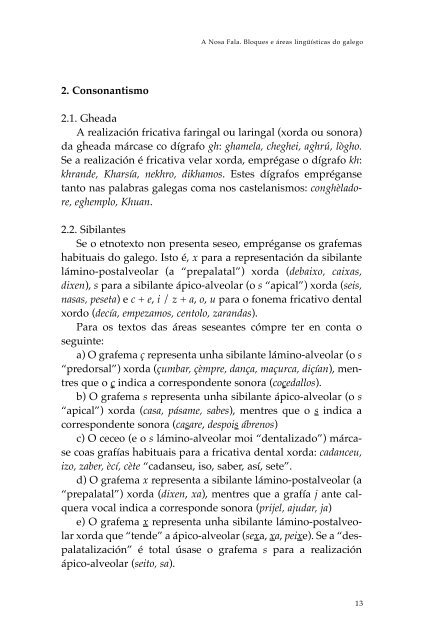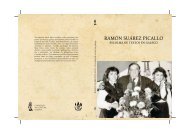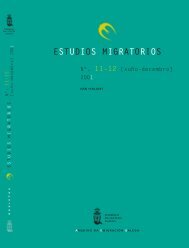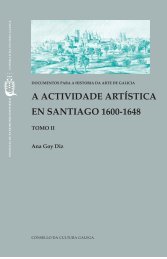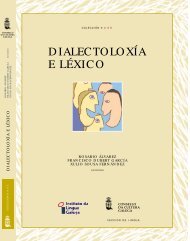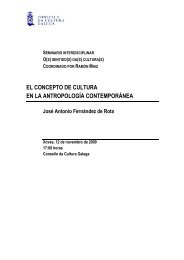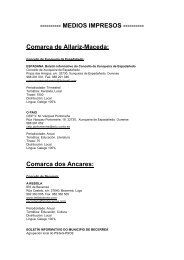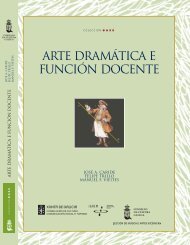Imprimir 1ª pág. A Nosa Fala CD - Consello da Cultura Galega
Imprimir 1ª pág. A Nosa Fala CD - Consello da Cultura Galega
Imprimir 1ª pág. A Nosa Fala CD - Consello da Cultura Galega
You also want an ePaper? Increase the reach of your titles
YUMPU automatically turns print PDFs into web optimized ePapers that Google loves.
2. Consonantismo<br />
A <strong>Nosa</strong> <strong>Fala</strong>. Bloques e áreas lingüísticas do galego<br />
2.1. Ghea<strong>da</strong><br />
A realización fricativa faringal ou laringal (xor<strong>da</strong> ou sonora)<br />
<strong>da</strong> ghea<strong>da</strong> márcase co dígrafo gh: ghamela, cheghei, aghrú, lògho.<br />
Se a realización é fricativa velar xor<strong>da</strong>, emprégase o dígrafo kh:<br />
khrande, Kharsía, nekhro, dikhamos. Estes dígrafos empréganse<br />
tanto nas palabras galegas coma nos castelanismos: conghèladore,<br />
eghemplo, Khuan.<br />
2.2. Sibilantes<br />
Se o etnotexto non presenta seseo, empréganse os grafemas<br />
habituais do galego. Isto é, x para a representación <strong>da</strong> sibilante<br />
lámino-postalveolar (a “prepalatal”) xor<strong>da</strong> (debaixo, caixas,<br />
dixen), s para a sibilante ápico-alveolar (o s “apical”) xor<strong>da</strong> (seis,<br />
nasas, peseta) e c + e, i / z + a, o, u para o fonema fricativo dental<br />
xordo (decía, empezamos, centolo, zaran<strong>da</strong>s).<br />
Para os textos <strong>da</strong>s áreas seseantes cómpre ter en conta o<br />
seguinte:<br />
a) O grafema ç representa unha sibilante lámino-alveolar (o s<br />
“predorsal”) xor<strong>da</strong> (çumbar, çèmpre, <strong>da</strong>nça, maçurca, diçían), mentres<br />
que o ç indica a correspondente sonora (coçe<strong>da</strong>llos).<br />
b) O grafema s representa unha sibilante ápico-alveolar (o s<br />
“apical”) xor<strong>da</strong> (casa, pásame, sabes), mentres que o s indica a<br />
correspondente sonora (casare, despois ábrenos)<br />
c) O ceceo (e o s lámino-alveolar moi “dentalizado”) márcase<br />
coas grafías habituais para a fricativa dental xor<strong>da</strong>: ca<strong>da</strong>nceu,<br />
izo, zaber, ècí, cète “ca<strong>da</strong>nseu, iso, saber, así, sete”.<br />
d) O grafema x representa a sibilante lámino-postalveolar (a<br />
“prepalatal”) xor<strong>da</strong> (dixen, xa), mentres que a grafía j ante calquera<br />
vocal indica a corresponde sonora (prijel, aju<strong>da</strong>r, ja)<br />
e) O grafema x representa unha sibilante lámino-postalveolar<br />
xor<strong>da</strong> que “tende” a ápico-alveolar (sexa, xa, peixe). Se a “despalatalización”<br />
é total úsase o grafema s para a realización<br />
ápico-alveolar (seito, sa).<br />
13


